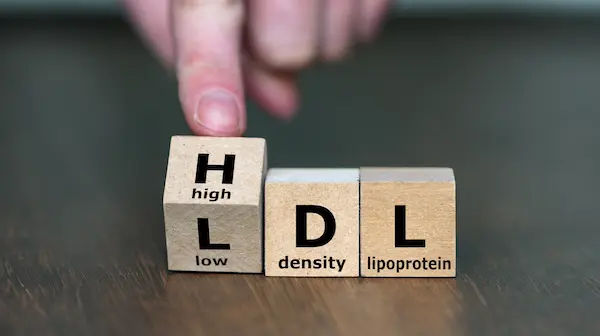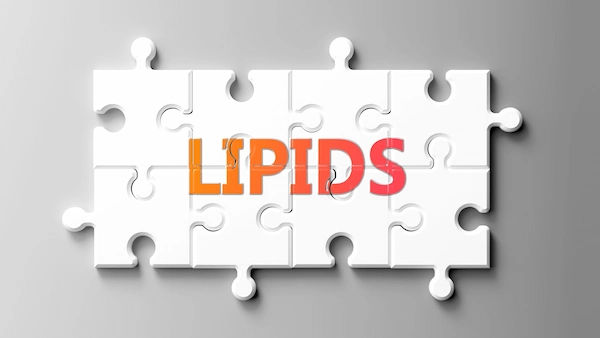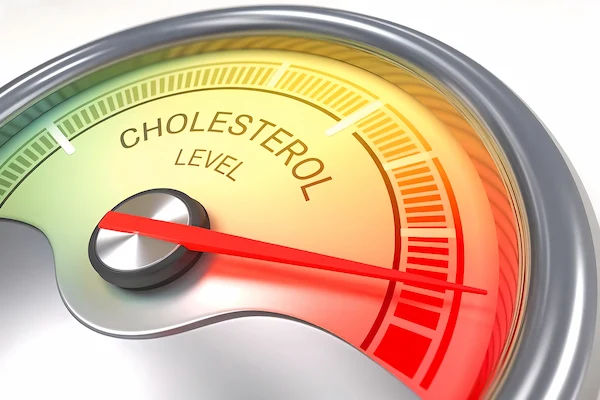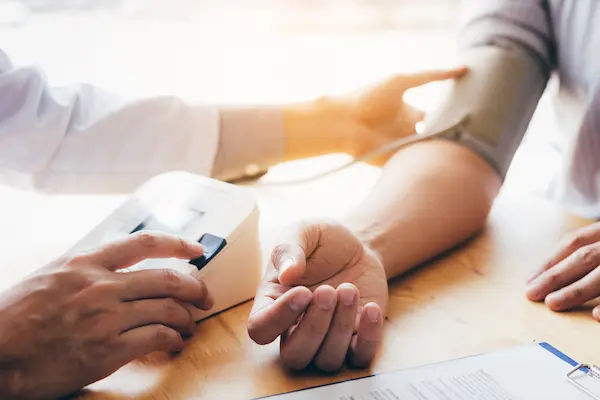Ways To Lower Ldl Cholesterol Without Medication
Discover effective ways to lower LDL cholesterol naturally through diet, exercise, fibre, plant sterols, and lifestyle changes. Improve heart health without medication in 4–12 weeks.

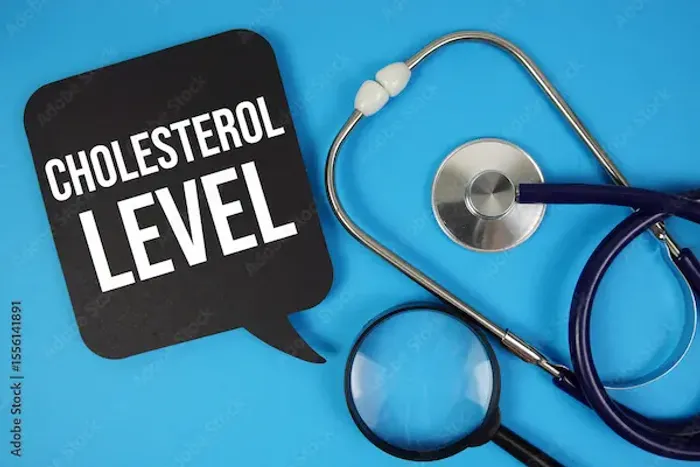
Introduction
If your latest blood test shows high LDL cholesterol, you might be wondering how much you can improve without medication. The good news: many people can lower LDL with smart changes to food, movement, and daily habits—often within weeks. This guide translates the best research into practical steps you can use immediately, from fibre-rich breakfasts to a weekly exercise plan tailored for busy lives. You’ll learn what LDL cholesterol is, how it differs from HDL, and why “non-HDL” and ApoB can be even more informative. We’ll cover proven eating patterns, the role of soluble fibre and plant sterols, how to upgrade your fats, and what science says about nuts, soy, and psyllium. Beyond diet, sleep, stress, alcohol, and smoking all affect cholesterol. You’ll get a simple, one-day menu, tips to track progress, and signals that indicate it’s time to talk with a doctor. Whether your goal is to reduce LDL naturally, avoid statins for now, or support medication later, this step-by-step plan shows you how to make LDL-friendly changes that fit your life.
Start Here: What LDL Cholesterol Is (And Why It Matters)
Low-density lipoprotein (LDL) carries cholesterol particles through the bloodstream. When LDL is high—especially when many particles are circulating—it can enter artery walls and contribute to plaque buildup. That’s why LDL is often called “bad” cholesterol. High-density lipoprotein (HDL), by contrast, helps carry cholesterol away for recycling. But there’s more to the story than LDL and HDL alone.
- LDL vs HDL vs non-HDL: The numbers that matter
Your standard lipid panel lists total cholesterol, LDL-C, HDL-C, and triglycerides. Non-HDL cholesterol (total minus HDL) captures all “atherogenic” particles and often tracks cardiovascular risk better than LDL alone. For many adults, a non-HDL target is 30 mg/dL higher than your LDL target. If your LDL is 130 mg/dL, aiming for non-HDL under 160 mg/dL is reasonable alongside lifestyle work.
Consult Top Specialists
- ApoB: The particle behind the number
Apolipoprotein B (ApoB) counts the number of atherogenic particles (including LDL). Think of ApoB as a more precise headcount of particles that can enter artery walls. If available, ApoB can refine your risk and goals—even when LDL appears “normal.” Discuss with your clinician whether checking ApoB can help personalise your plan.
- Understanding your lipid panel at a glance
Elevated LDL-C and non-HDL-C mean you’ll benefit from diet and lifestyle changes. If triglycerides are high, reducing added sugars and alcohol while focusing on omega-3-rich foods helps. Track progress with repeat labs after 6–12 weeks of consistent changes. Apollo 24|7 offers convenient home collection for lipid testing—including LDL, non-HDL, and, where available, ApoB—so you can monitor your numbers without disrupting your schedule.
How Fast Can You Lower LDL Without Medication?
Most people can begin lowering LDL within 4–6 weeks of consistent lifestyle changes, with meaningful improvements by 12 weeks. The amount depends on your starting point and effort intensity.
- Realistic timelines and expected drops
- Soluble fibre (e.g., oats, barley, legumes) can reduce LDL by 5–10% when you reach recommended intakes, often within a month.
- Plant sterols/stanols (around 2 g/day from fortified foods) typically lower LDL by 5–15% in a few weeks.
- Combining LDL-lowering foods in a Portfolio-style approach (fibre, nuts, soy protein, plant sterols) can reduce LDL by roughly 13–30%, depending on adherence.
- Replacing saturated fat with unsaturated fats can produce additional, incremental LDL reductions.
- What influences your pace
Your baseline diet, body weight, genetics, sleep, stress, and alcohol intake all matter. Weight loss of 5–10% can meaningfully improve your lipid profile; even before big weight changes appear on the scale, dietary composition shifts can improve LDL. If you’ve been eating a lot of saturated fat (butter, high-fat dairy, fatty cuts of meat), simple swaps to olive or canola oil and lean proteins can move numbers quickly. Consistency and portion sizes drive results. If your LDL remains very high (e.g., ≥190 mg/dL) or you have a strong family history, speak with a clinician sooner rather than later. If lifestyle changes are insufficient, book a physical visit to a doctor with Apollo 24|7 to reassess your risk.
Proven Eating Patterns for Lower LDL
Diet patterns beat single “superfoods” because they work together at every meal.
- Portfolio Diet: A targeted LDL-lowering approach
Created to target LDL cholesterol, the Portfolio Diet combines four evidence-based elements: viscous (soluble) fibre,
plant sterols/stanols, soy protein (or other plant proteins), and nuts. Clinical trials show people following this pattern
lowered LDL by about 13% versus a low-saturated-fat diet at one year, and more in tightly controlled settings. A typical
day might include oat or barley cereal; a soy or bean-based lunch; a sterol-enriched spread or yoghurt; a handful of
nuts; and plenty of vegetables and fruits.
- Mediterranean-style eating: Heart-protective and sustainable
Mediterranean diets emphasise vegetables, fruits, legumes, whole grains, nuts, seeds, and extra-virgin olive oil, with fish and yoghurt in moderation and limited red/processed meats. LDL decreases are modest to moderate, but overall heart protection is strong due to improved LDL oxidation, inflammation, and endothelial function.
- DASH diet: Blood pressure champion that helps cholesterol too
Designed for blood pressure, DASH also supports LDL improvement by emphasising fruits, vegetables, low-fat dairy, whole grains, and limiting saturated fat and sodium.
Upgrade Your Fats: From Saturated to Unsaturated
Not all fats affect LDL the same way. Saturated fats raise LDL, while unsaturated fats (mono- and polyunsaturated)
tend to lower it when used in place of saturated fats. Eliminating artificial trans fats is essential.
- Where saturated and trans fats hide
Saturated fat is common in butter, ghee, high-fat dairy (cheese, cream), fatty cuts of beef and lamb, and coconut/palm oils. Processed snacks and baked goods may contain saturated fat and residual industrial trans fats. Dietary cholesterol (e.g., eggs) has a smaller effect on blood cholesterol than saturated fat, but moderation is advised.
- Smart swaps: Oils, dairy, meats, and snacks
- Replace butter/ghee with extra-virgin olive, canola, or peanut oil.
- Choose low-fat or fermented dairy instead of cream and rich cheeses.
- Swap fatty red meats for fish, skinless poultry, or plant proteins.
- Snack on nuts or hummus with vegetables instead of pastries or chips.
- Cooking tips to keep LDL-friendly meals delicious
Build flavour with herbs, spices, garlic, onion, ginger, citrus, and vinegars. Toast spices in oil to bloom aroma, then add vegetables and legumes. Finish soups and dals with a drizzle of olive oil and a squeeze of lemon rather than cream. Grill or roast fish with spice rubs to satisfy “umami” without saturated fat.
Consult Top Specialists
Fibre and Plant Sterols: Small Changes, Big LDL Wins
Soluble fibre and plant sterols/stanols are two of the most reliable non-medication tools for reducing LDL.
- Soluble fibre (oats, barley, legumes): How much you need
Soluble fibre forms a gel in the gut, binding bile acids and cholesterol for excretion. Aim for at least 5–10 grams daily. Sources: oats and oat bran, barley, psyllium, beans/lentils, ground flaxseed, okra, and aubergine. About 3 g of oat beta- glucan per day produces measurable LDL reductions within weeks.
- Plant sterols/stanols: What they are and how to use them
Plant sterols/stanols resemble cholesterol and compete for absorption. Around 2 g/day from fortified spreads, yoghurts, or beverages can reduce LDL by 5–15% within a few weeks [5]. Include with meals for best effect.
- Psyllium husk: A simple daily add-on
Psyllium (7–10 g/day) helps reach soluble fibre targets. Stir into yoghurt or water before meals. Start low to minimise bloating and drink plenty of water.
Protein Choices That Nudge LDL Down
Protein affects LDL via associated fats and fibre content.
- Soy and legumes vs red and processed meat
Replacing red/processed meats with soy foods (tofu, tempeh, edamame) and legumes reduces saturated fat and adds
fibre and plant sterols. Around 25 g/day of soy protein modestly lowers LDL.
- Fish, nuts, and seeds
Fatty fish (salmon, sardines, mackerel) support overall heart health. Nuts consistently lower LDL modestly; a handful (28–42 g) most days is reasonable. Seeds (flax, chia) add fibre and plant omega-3s.
- Budget-friendly, plant-forward meal ideas
Try dal with barley, black bean tacos with avocado, or tofu-spinach stir-fry with brown rice.
Move More: An Exercise Plan That Targets LDL
Exercise helps lower LDL modestly and improves overall lipid quality.
- Aerobic, resistance, and HIIT
Brisk walking, cycling, or swimming reduces LDL and triglycerides, and slightly increases HDL. Resistance training
improves insulin sensitivity and body composition.
- Weekly plan for beginners and busy people
- Beginners: 150 minutes/week moderate aerobic + 2 resistance sessions.
- Busy schedule: 3×25 min brisk walks + 2×20 min circuit sessions.
- Already active: 2–3 HIIT sessions + 2 strength days.
- Turning daily activities into cardio
Climb stairs, walk during calls, carry groceries, or dance while cooking.
Lifestyle Levers Beyond Food
- Sleep and stress
Aim for 7–9 hours of consistent sleep. Brief mindfulness, box breathing, or short walks reduce stress-induced LDL
effects.
- Alcohol and smoking
Limit alcohol to prevent triglyceride spikes. Quitting smoking improves HDL and artery health at any age.
Tracking Progress, Lab Tests, and When to See a Doctor
- Targets for LDL, non-HDL-C, and ApoB
Discuss personal targets with your clinician. Non-HDL-C goals are typically 30 mg/dL above LDL goals; ApoB
provides a particle count.
- When lifestyle is not enough
Seek medical therapy sooner if LDL ≥190 mg/dL, diabetes, kidney disease, cardiovascular disease, or familial hypercholesterolemia. Apollo 24|7 provides home collection for lipid testing including ApoB.
- How often to recheck labs
Repeat lipid panels after 6–12 weeks of consistent changes, then every 3–12 months depending on goals.
A One-Day LDL-Lowering Menu (With Swaps)
- Breakfast
Option A: Overnight oats with oat bran, chia, berries, soy yoghurt.
Option B: Barley upma with vegetables; side of low-fat yoghurt.
- Lunch
Option A: Chickpea-vegetable stir-fry over brown rice.
Option B: Lentil soup with whole-grain toast and sterol-enriched spread.
- Dinner
Option A: Grilled salmon with roasted aubergine/okra and barley salad.
Option B: Tofu palak with whole-grain roti and cucumber raita.
- Snacks and sips
Handful of mixed nuts, soy milk latte or unsweetened tea, psyllium in water before meals.
Conclusion
Lowering LDL cholesterol without medication is realistic and rewarding when you focus on behaviours that move the needle: a plant-forward plate with the right fats, daily soluble fibre, targeted add-ons like plant sterols and psyllium, and a sustainable movement routine. Start with a Mediterranean or DASH pattern, then layer Portfolio Diet elements to accelerate LDL reductions. Add simple wins outside the kitchen: consistent sleep, stress breaks, alcohol in check, and a plan to quit smoking if needed. Expect improvements within 4–12 weeks when consistent. Recheck your lipid panel and consider tracking non-HDL or ApoB to understand progress more clearly. Apollo 24|7 offers home collection so you can monitor numbers conveniently. This approach is not all-or-nothing; small, repeatable choices add up. If LDL remains high (≥190 mg/dL) or overall risk is elevated, consult a clinician about medication while continuing healthy habits. When lifestyle and medication work together, results are often optimal. Start today—your heart benefits well before the next blood test.
Consult Top Specialists
Consult Top Specialists

Dr. Anand Ravi
General Physician
2 Years • MBBS
Bengaluru
PRESTIGE SHANTHINIKETAN - SOCIETY CLINIC, Bengaluru
Dr Moytree Baruah
Cardiologist
10 Years • MBBS, PGDCC
Guwahati
Apollo Clinic Guwahati, Assam, Guwahati

Dr. Tripti Deb
Cardiologist
40 Years • MBBS, MD, DM, FACC, FESC
Hyderabad
Apollo Hospitals Jubilee Hills, Hyderabad

Dr. Zulkarnain
General Physician
2 Years • MBBS, PGDM, FFM
Bengaluru
PRESTIGE SHANTHINIKETAN - SOCIETY CLINIC, Bengaluru

Dr Nazneen Khan
Cardiologist
7 Years • M.B.B.S, M.D (MEDICINE), DrNB CARDIOLOGY
Pune
Apollo Clinic, Viman Nagar, Pune
Consult Top Specialists

Dr. Anand Ravi
General Physician
2 Years • MBBS
Bengaluru
PRESTIGE SHANTHINIKETAN - SOCIETY CLINIC, Bengaluru
Dr Moytree Baruah
Cardiologist
10 Years • MBBS, PGDCC
Guwahati
Apollo Clinic Guwahati, Assam, Guwahati

Dr. Tripti Deb
Cardiologist
40 Years • MBBS, MD, DM, FACC, FESC
Hyderabad
Apollo Hospitals Jubilee Hills, Hyderabad

Dr. Zulkarnain
General Physician
2 Years • MBBS, PGDM, FFM
Bengaluru
PRESTIGE SHANTHINIKETAN - SOCIETY CLINIC, Bengaluru

Dr Nazneen Khan
Cardiologist
7 Years • M.B.B.S, M.D (MEDICINE), DrNB CARDIOLOGY
Pune
Apollo Clinic, Viman Nagar, Pune
Consult Top Specialists

Dr. Anand Ravi
General Physician
2 Years • MBBS
Bengaluru
PRESTIGE SHANTHINIKETAN - SOCIETY CLINIC, Bengaluru
Dr Moytree Baruah
Cardiologist
10 Years • MBBS, PGDCC
Guwahati
Apollo Clinic Guwahati, Assam, Guwahati

Dr. Tripti Deb
Cardiologist
40 Years • MBBS, MD, DM, FACC, FESC
Hyderabad
Apollo Hospitals Jubilee Hills, Hyderabad

Dr. Zulkarnain
General Physician
2 Years • MBBS, PGDM, FFM
Bengaluru
PRESTIGE SHANTHINIKETAN - SOCIETY CLINIC, Bengaluru

Dr Nazneen Khan
Cardiologist
7 Years • M.B.B.S, M.D (MEDICINE), DrNB CARDIOLOGY
Pune
Apollo Clinic, Viman Nagar, Pune
More articles from Cholesterol
Frequently Asked Questions
How long does it take to lower LDL naturally?
Most notice improvements in 4–6 weeks, with larger changes by 12 weeks. Combining soluble fibre and plant sterols with fat-quality swaps accelerates progress.
What foods lower LDL cholesterol fast?
Focus on soluble fibre (oats, barley, legumes), plant sterols/stanols, nuts, soy, and vegetables. Replace saturated fats with olive or canola oil.
Do supplements work for cholesterol?
Psyllium husk (7–10 g/day) modestly reduces LDL; plant sterol-fortified foods reduce LDL 5–15%. Discuss red yeast rice with a clinician.
Can exercise alone lower LDL?
Exercise produces modest LDL reductions but significantly improves overall lipid health. Best results come when paired with diet changes.
When should I consider medication?
If LDL ≥190 mg/dL, diabetes, cardiovascular disease, or lifestyle changes don’t achieve targets after ~3 months. Consult a doctor online with Apollo 24|7 for personalised advice.
